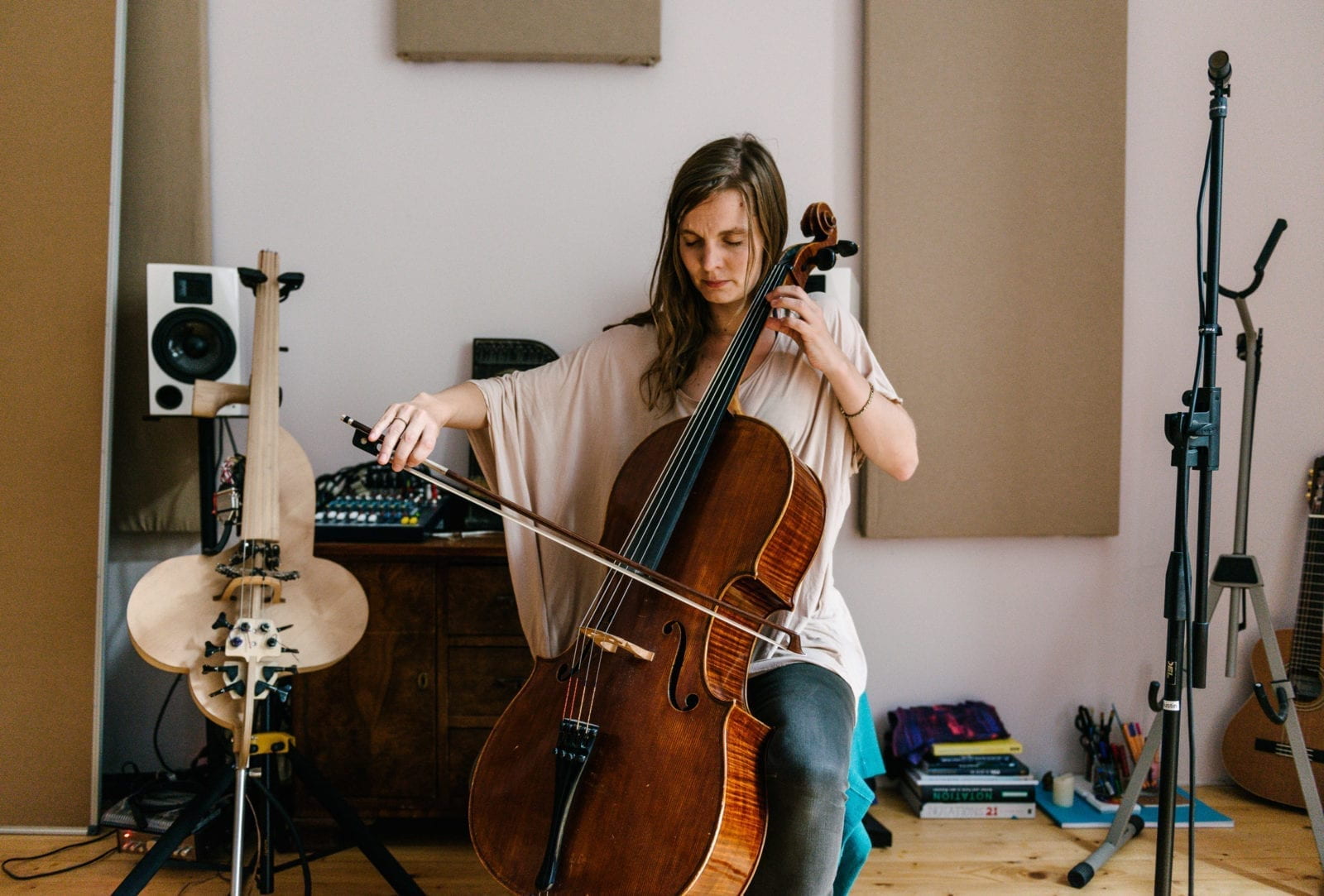All Ears for Hildur Guðnadóttir
By Andrea Nguyen
In film, there are few things more seductive than music in its power to direct and even dictate emotion. Consider the acoustic guitar against a cello, or a perfect fourth versus a tritone. Down to the instrument and the interval, audiences are fluent in the language of musical cues. With such a powerful tool at the ready, it can be tempting to blanket the sonic landscape of a film in a way that leaves little room for misinterpretation or subtlety. However, renowned musician Hildur Guðnadóttir (Joker, Chernobyl) has built somewhat of a reputation for resisting a heavy-handed approach to scoring, and her discerning ear has earned her the coveted position of composer on two films released this past year, Todd Field’s Tár and Sarah Polley’s Women Talking.
With Tár, Guðnadóttir’s work serves the world that the film imagines rather than just the film itself. To the chagrin of many musical traditionalists, the majority of Guðnadóttir’s pieces go entirely unheard by the audience. Instead, her compositions lived in earpieces worn by the actors, setting the tempo of their performance and enriching their inner universe.
Tár’s soundtrack comprises its own concept album, including a completed version of Lydia Tár’s work in progress, “For Petra,” which opens up a parallel – or future – world beyond the central storyline in which Tár finishes the piece. The actual score, mixed low, remains nearly imperceptible for the vast majority of the film. It instead constitutes a dust that settles into the lungs of the narrative, unsettling the viewer without formally announcing its presence. Even when Guðnadóttir’s music does surface in our consciousness, it still serves to disorient.
During the scene in question, Tár wanders through a labyrinthine apartment complex in search of her newest cellist and fixation, Olga, as a vocal version of “For Petra” (featuring Guðnadóttir herself), fades in and out of hearing range. At first listen, it’s easy to assume that Guðnadóttir’s haunting voice is diegetic, so tonally well-matched as it is to the shadowy passages and dripping pipes of the basement hallway. As the scene carries on, it becomes equally plausible, from a sonic standpoint, that the melody exists solely in Lydia’s head, and, by proxy, in ours. This disembodiment of sound showcases music’s ability to merge the listener’s consciousness with that of the character, offering an elasticity of identity that implicates us in Tár’s unchecked curiosity. Like our antihero, we become creatures without restraint, chasing blindly after the source of wonder.
With Sarah Polley’s Women Talking, Guðnadóttir takes a more traditional, which is to say melodic, approach. Her ruminative score leans folksy, underpinned by layered guitars, occasionally swelling with orchestral strings and percussive hits. Each melodic strain gives body to the same sense of purpose but shades it with a different color, paralleling the voices of the titular characters, whose debate strives toward liberation but through different pathways, like so many rivers seeking their outlet in the sea.
Guðnadóttir’s score is immediately grounding, balancing the familiarity of a porch-side jam session with the regularity of a work song. Plucky guitars signal cautious hope, while reverberant drum hits spell trouble on the horizon. Tracks like “Pros and Cons” anchor the listener with an acute sense of surfaces – perhaps copper, tin, wood – firmly rooted in the material world of the Mennonite women navigating their response to the men who have preyed on them for years. As listeners, we hear the walls in the recording and intuit the profound silence that will remain should the women vacate the colony. While Guðnadóttir’s work here boasts emotional richness, it refrains from being prescriptive, instead unfurling like the most earnest of questions seeking its resolution, as much sunrise as it is sunset.
Just as Tár inspires us to consider the question of when exactly sound becomes music, Guðnadóttir’s work inspires us to consider the point at which music becomes score. With Tár and Women Talking, the decorated composer demonstrates incredible range, reminding us that music is a tool with many edges; it wields the power to not only deepen emotional resonance but also set the metronome of a performance, ground us within the texture of a given time period, and subsume us into minds other than our own.

Leave a Reply
You must be logged in to post a comment.